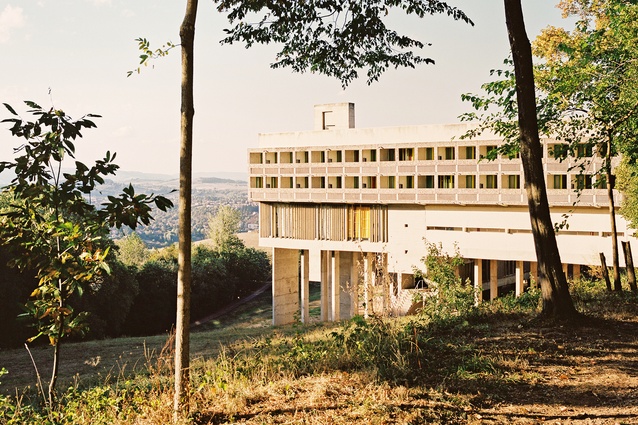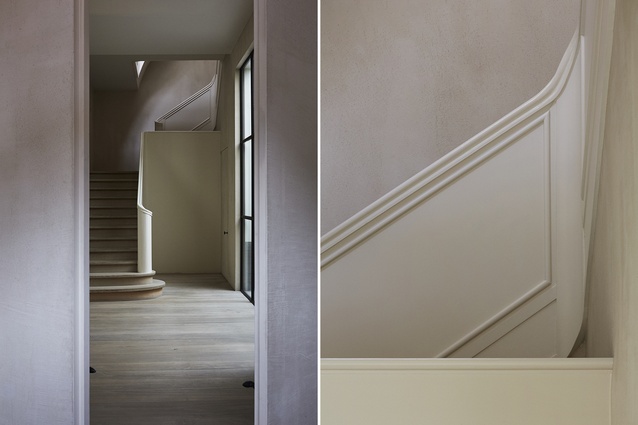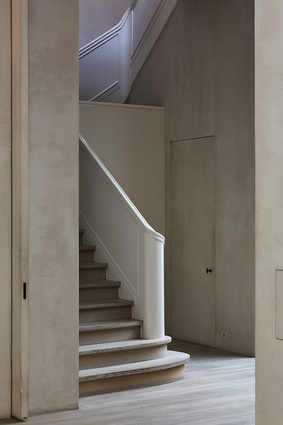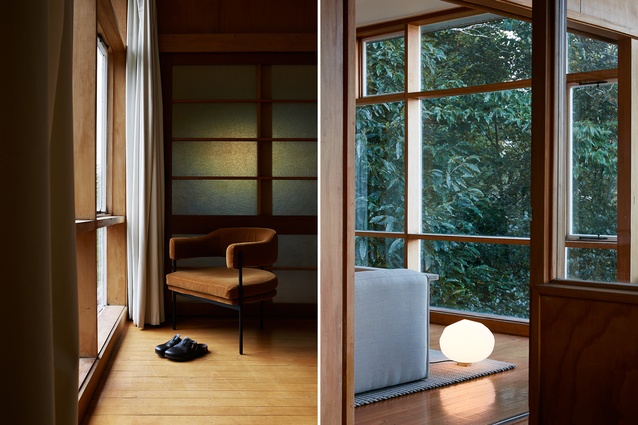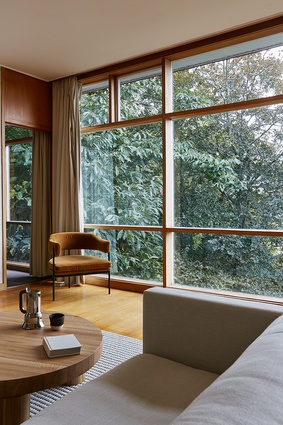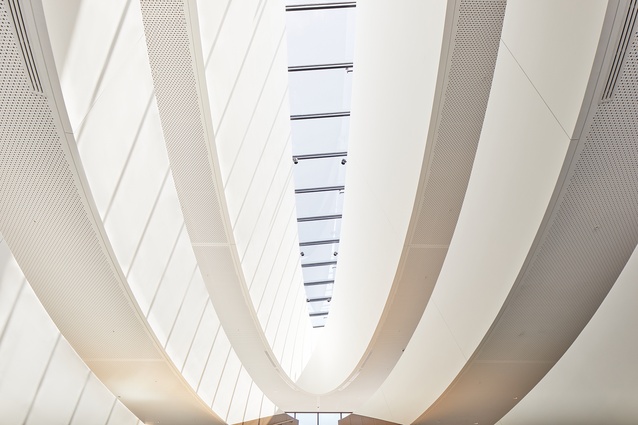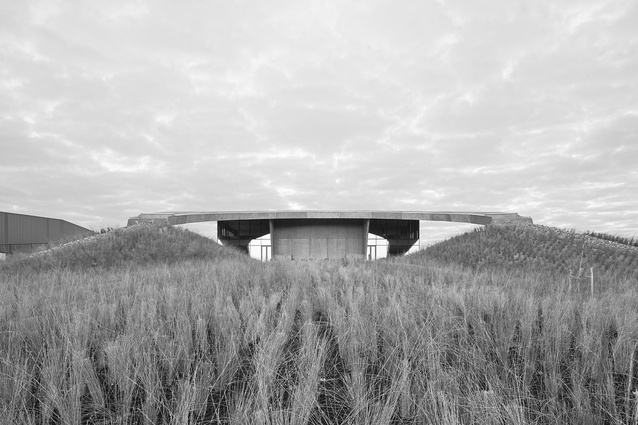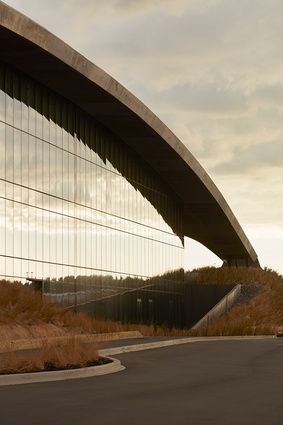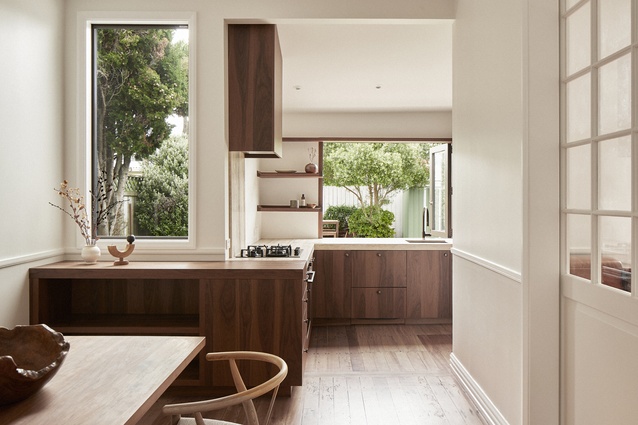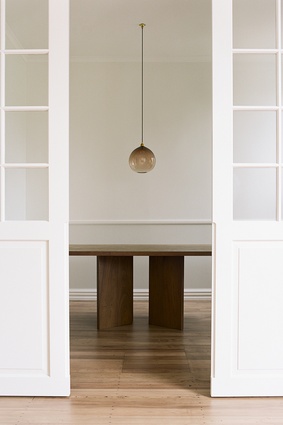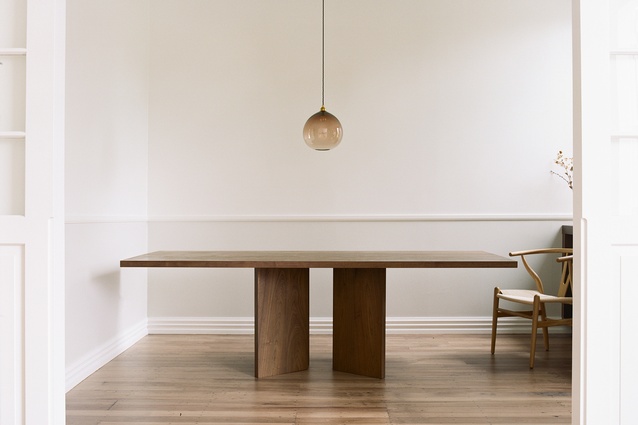Viewfinder: Top five with Thomas Seear-Budd
Thomas Seear-Budd splits his time between working as an architect and taking photos of architecture. We caught up with him to hear about his favourite projects and how he balances art and building.
Tell us about the projects you chose for your top five and what stood out about them?
Thomas Seear-Budd (TSB): The first project I have chosen is Le Corbusier’s La Tourette monastery in Lyon, France. This was a self-directed shoot and later became a small book. I made the pilgrimage to La Tourette, like many architects before me, with a bunch of friends. We stayed overnight each in our own monk’s quarters. The monastery is still operational and welcomes guests from all over the world to experience not only the architecture but the monastic way of life. As an architect and photographer, this is a fascinating project for me. We see ‘Corbs’ mastery of form, light and colour intersect with the natural realm. It is brutal yet poetic, avant garde yet incredibly functional, complex and simple. It was an absolute joy to visit, photograph and produce into a book.
Secondly, I’ve picked Vincent Van Duysen’s own home in Antwerp, Belgium. This project is important to me because it defines a turning point in my photographic and architectural career. I pitched the idea of shooting Vincent’s home and conducting an interview with him to Simon at Home Magazine. Simon approved the proposal and I set about getting in touch with one of the most famous architects and interior designers in the world. Fortunately, I had a way in. I had had a few chats with Vincent via Instagram in the past so we weren’t complete strangers. In short, he agreed to the shoot and a full interview that lasted much of the afternoon. Stepping into his home was a transformative moment for me. It was spacious, calm, subtlety textured, simple but warm, minimal but lived in. The natural timbers, lime plaster, flowers, room scents and fabrics created a concoction of smells that hits you as soon as the large front doors are opened. Experiencing his home and talking to the man himself inspires me as an architect and photographer to this very day.

The next project is much more closer to home. For six years I lived in this wonderful example of New Zealand modernism, the 1960s Dobson House by Wellington Architect Bill Toomath. The house formed the perfect backdrop for a Simon James campaign shoot. The house is a simple maroon box lifted up into the tree canopy and surrounded by lovely bush. One face is entirely glass with lovely Mondrian-like timber divisions. I appreciate how simple yet flexible the plan is and how poetic it is to live amongst the trees.
The fourth project is Monk Mackenzie’s new headquarters for Foodstuffs in Auckland. This is a fairly recent shoot of mine. I always love working with the team at Monk Mackenzie. Their projects always have so many layers, impeccable detailing and a lot of soul. Despite being one of their larger projects FSNI [Foodstuffs North Island] is no exception. I know from my previous experience working on large commercial projects that distilling a project to its essence while creating an atmosphere and executing fine detailing is difficult in a commercial environment. For me, this project has all three aspects and I hope my images convey that.

My final project is one of our own at Seear-Budd Ross Architects. This villa renovation was completed in late 2020 and embodies some of my learnings as an architect from the projects above. We used a refined palette of travertine and walnut to imbue this 1910s villa in New Zealand with a warm, calm and inviting atmosphere. I shot this project completely on medium format film, with a big old camera. Compared to shooting digital this is a very slow process. I find it an incredibly calming way to shoot and have now brought it into my main workflow when shooting for other clients. It’s strange to be shooting your own projects, but at the same time, it’s very rewarding to see your two worlds intersect. I look forward to shooting a lot more of our projects this year.
How did you get involved with photography initially?
TSB: I became interested in photography during my architecture degree. I began using the camera as a design tool in the early stages of a project. The camera became a vital part of my design process during my final year thesis, which was focussed around the burnt Mountain Ash forests of Victoria, Australia. I conducted a detailed photographic assessment using the camera to extract the atmospheric essence and soul of the place. This process taught me that with some care the camera can convey what it feels like to inhabit a particular place or space. The photographic works from Victoria focussed on notions of loss, reverie and wonder. I still find these images to be beautiful and powerful representations of that place. I also travelled a lot after university and this fuelled my interest in photography.
Was architecture as a career path on your radar before or after you discovered a passion for photography? When you initially started taking photos, did you have an interest in capturing buildings specifically?
TSB: I have wanted to be an architect ever since I was in high school. My passion for the built environment may have even begun earlier. As I child I was always building things and I remember being particularly aware of how various spaces made me feel. For instance, one room of my family home was painted a deep dark green with soft dark carpet. I knew these factors contributed to it being a warm, cosy space from a very young age.
My focus on architectural and fashion photography has developed over the last decade and goes hand in hand with my own architecture practice. However, I also appreciate a powerful landscape or beautifully crafted objects.
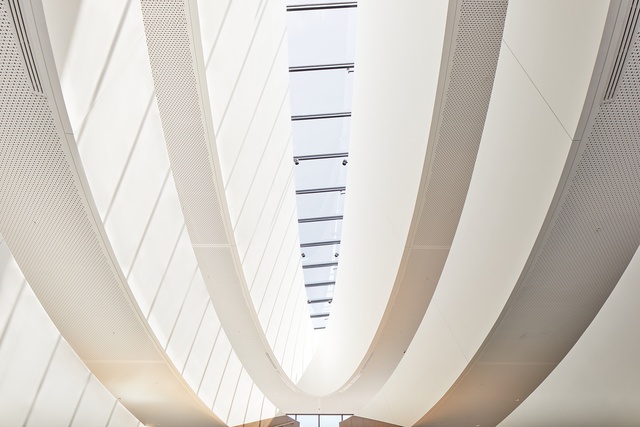
What do you think training and working as an architect brings to your photographic approach when shooting a building or space? Do you approach shooting a space that you haven’t designed yourself differently than one you have?
TSB: This is an interesting question. I believe my training and experience as an architect allow me to communicate with my photography clients (other architects) on a deeper level. I understand that sometimes we (architects) don’t want images that simply document a space. Photographers can create images that perhaps contain less but present more. Images that speak to the feeling of a space, the sequence of spaces that together make up a whole, and details that in light or shadow speak to the heart of what the architect is seeking to achieve. An example here is my images of Le Corbusier’s La Tourette in Lyon.
To answer the second part of your question, I don’t believe there is a difference. I still conduct a briefing process but it’s with myself and James Ross, my business partner, when shooting for Seear-Budd Ross. I am always trying to do right by the project no matter who I am shooting for.
Vice versa: what does your knowledge of photography bring to your architectural designs?
TSB: One obvious answer – which I don’t really believe is super important – is that I can use my knowledge of framing and sequencing to present carefully considered digital renders of a building to our clients. My architectural and photographic work is highly focused on emotion and atmosphere. Whether I’m operating as an architect or photographer I am always trying to create a certain mood or feeling. However, sometimes it can be hard to not look at one of our projects as a series of images. At Seear-Budd Ross we are not there to just create beautiful images, we are there to create interesting spaces that make us feel an emotion. Sometimes I have to remind myself when we are designing and tell the photographer in me to sit down.
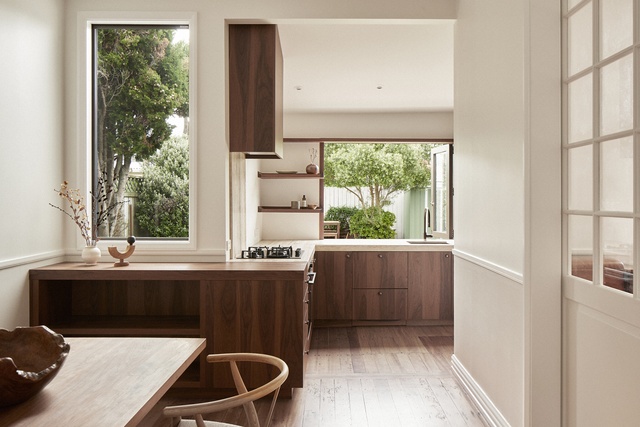
Do you see yourself going in one direction over the other when it comes to architecture versus photography?
TSB: Architecture and photography will always be a part of my life. I am very lucky to have wonderful clients in each profession and I find it incredibly rewarding to be able to explore both. I am also finding it very rewarding to be able to shoot our own Seear-Budd Ross projects. In the future, we hope to create books where my two worlds will collide and hopefully be interesting to others.
See more from the Viewfinder series here…

